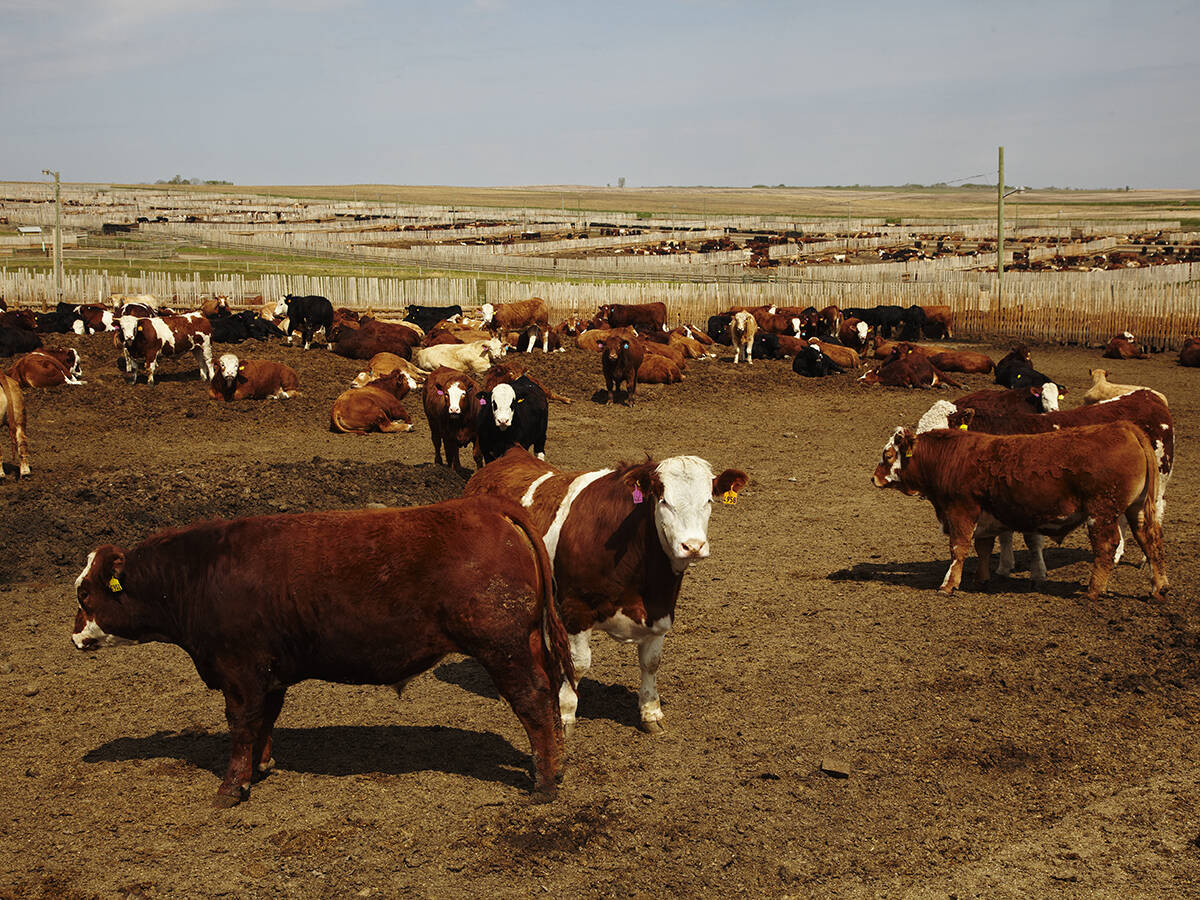This cattle market information is selected from the weekly report from Canfax, a division of the Canadian Cattlemen’s Association. More market information, analysis and statistics are available by becoming a Canfax subscriber by calling 403-275-5110 or at www.canfax.ca.
Fed market stabilizes
The fed cattle market found some footing last week following an $18 per hundredweight drop in Alberta live prices through June.
Trade was too thin to establish a weekly weighted average price.
Read Also

Canfax cattle market report – November 13, 2025
The Canfax cattle market report for November 13, 2025. Fed & feeder cattle prices, butcher cow trends, and cutout market insights.
Dressed bids generally started out the week $3 to $5 per cwt. higher than the previous week’s trade.
Both Alberta federal packers were in the market, but they were not in the mood to push their bids much higher, even with stronger Chicago cattle futures and higher cash prices in the United States.
Basis levels between the Alberta market and the U.S. markets substantially weakened, and some producers opted to carry cattle over.
Dressed bids were generally around $243 per cwt. delivered midweek, and the following day they perked up slightly to $245.
However, relative to the US$122 trade, the basis worked out to about -$12, which was very weak for the season.
Supplies appear to be ample. Weekly western Canadian kill was 45,371, the largest of the year. On steers, 31,383 were slaughtered, the most since June 2009.
While the probability is still fairly high that the market could move lower, the downside risk is somewhat limited.
The U.S. market has fundamental factors supporting prices. Feedlots are more current, and packer margins are strong. With U.S. prices down, there is good beef demand in the American and export markets.
Reuters reported that packers in the southern U.S. were paying US$122 per cwt. July 1, up $6 from the previous week.
Cows lower
D1, D2 cows ranged C$84-$100.50 to average $90.49 per cwt., down $7.61. D3 cows ranged $71-$87 to average $79.50.
Rail grade cows ranged $180-$185. Bulls averaged $117.43, down $5.13.
A large proportion of auction volumes during the week were cows and bulls. Packers were not that interested in buying because they are focusing on fed cattle.
Demand for ground beef and end cuts has been soft, pressuring prices down.
Weekly non-fed exports to June 18 were almost 2,700 head, the highest weekly volume this year.
Volumes are expected to tighten, and cow prices should stabilize or rise a little.
Feeders weaker
The Alberta feeder market was fairly quiet in the week leading to July 1.
Average steer prices fell almost $4 per cwt., and heifers dipped 75 cents.
Rain has eased concerns about dry pastures, but reduced feeding profitability is limiting demand.
Calf prices traded unevenly, ranging $5 up or down from the previous week, with prices influenced by lot size and quality.
A few larger feeders traded steady to $6 lower.
Weekly auction volumes fell 18 percent to 9,119 head from the previous week, but that was 27 percent larger than last year.
Weekly feeder exports to June 18 fell to a modest 2,409 head.
Many auction markets will take a break in July.
Cow-calf pairs traded in a range of $1,500 to $2,750.
The Chicago feeder futures rose last week on the improved fed market and falling corn prices.
U.S. beef falls
U.S. boxed beef closed lower June 29 with Choice at $208.57, down $6.89, and Select at $195.88, down $2.46.
After July 4, the market enters the dog days of summer when beef demand typically slows.
As well, year-to-date beef production is 3.7 percent larger than a year ago.
These two factors will place downward pressure on prices.
Canadian cut-out values for the week ending June 24 were unavailable.














